GYÖRGY LIGETI : Musica ricercata & 6 Bagatelles for wind quintet (1951-55) –
The search for a language of his own in the shadow of Bartók.
György Ligeti comes from Transylvania, his birthplace has belonged to Romania since the post-war period, but he is Hungarian from a Jewish family. After the war, which he was lucky to survive (apart from his mother, his family died in a concentration camp), he began to study music
to Budapest.
In the short phase before Hungary was subjugated by Stalinism, there was a culturally open climate in which the young composer must have absorbed all the latest trends like a sponge. However, after that (from 1946), just like in the USSR, the culture was regulated and suppressed. Musically, a simple, real-socialist style was required. Even by the acknowledged greatest Hungarian composer, Béla Bartók, only a few pieces were performed, mostly folk music arrangements.

The young Ligeti outwardly followed these guidelines, but in reality he was looking for a new style in which harmony and the passage of time were largely eliminated. The pieces on this way could only be created for the drawer. For example the ‘Musica ricercata’ for piano. The title is a reference to the ricercar, the early baroque form of the fugue (e.g. in Girolamo Frescobaldi, to whom the 11th piece refers), but also aptly means “searching music” in German.
Hoping to have his music performed, Ligeti arranged 6 pieces from this 11-part cycle as the Bagatelles for wind quintet. But even then, the 6th Bagatelle was rejected on the grounds that there were too many small seconds – the judgments on new musical works were so superficial. Since the score was left behind when they fled to the West, Ligeti reconstructed the instrumentation for a Swedish wind quintet for the overall premiere in 1969.
In this version, the work became a classic hit of the 20th century: wind quintets are hungry for good pieces and – when have you ever seen such a catchy work by a notorious avant-gardist? It is often forgotten that there is an original work (the ’10 pieces for wind quintet’) from the 1960s (i.e. Ligeti’s demanding micropolyphonic period), but it is never the same could achieve popularity.
But despite the relatively traditional, Bartók-like tonal language, Musica ricercata/ Bagatelles shows many aspects that are consistently typical of Ligeti’s work.
- Form progression: Ligeti prefers processual to developing forms (in contrast to Bartók). That means: Form (and harmony) appear without contrasts or even statically (see also point ‘Rules of the game’). Musical parameters flow in straight lines transitions into one another instead of developing into spin-offs or spin-offs. The simplest example: the first piece of the Musica ricercata on the one note A is in principle a process of speeding up, achieved through real accelerando and process-related shortening of the basic rhythmic motif up to the five-eighth-long figure from Prestissimo.
2. Rhythm: This technique already shows Ligeti’s preferred relationship to rhythm and meter: bar lines stand for coordination, but not in the sense of a metric emphasis. Even in the Musica ricercata there are numerous passages where rhythmic processes are composed across bars. The successive quintuplets, sextuplets, septuplets, etc. are then composed as an accelerando. In later works, this can also be found as a micropolyphonic obfuscation in different values at the same time.
3. Intervals: In many pieces, the melodic line prefers a small ambitus (most frequently the minor third), which is filled out in small intervals. On the other hand, there are eruptions at large intervals. These sudden gestures also become typical of later works, where there are repeated crashes and breakouts – either as expressive interruptions in the process or as end or turning points. In the piano version there are already spoken, programmatic playing instructions such as ‘ferocissimo (very wild)’, ‘minaccioso (threatening)’, ‘like in a panic’, ‘insisting, defiant’, ‘like crazy’. In the wind version, these are almost all reduced or transformed into relatively neutral Italian playing instructions (a sign of the sober avant-garde years?), but this does not soften the extreme expression.
4. Rules of the game: This term does not quite belong in this series, but perhaps best describes Ligeti’s approach to composing. In part, this attitude can already be found in Bartók (see my analysis of “Music for Stringed Instruments, Percussion and Celesta”): simple basic requirements create complex compositional connections. Let’s think of simple board games: a few rules and clear game goals (e.g. mill and checkers) always create different and complex game processes. This is also the case in the Musica ricercata: the basic rules of the game are kept extremely simple. The eleven pieces each have an increasing range of notes: from two notes in the first to all twelve in the last (although the idea of introducing the new note towards the end of the piece is already abandoned from the 3rd piece). However, the selection of the tones already reveals a more complex way of thinking: the same tones are not always used, but successive pieces use a range of tones that are as contrasting as possible, e.g. with fundamental tones that are far away (see overview).
The scales mostly obey point or scale symmetries (except in the more Mixolydian pieces 7+8 and the pieces with an almost complete chromatic scale). The compositional tasks that result from the small number of tones are demanding, sometimes even amusing: How do you create an interesting piece from just one (two), three or four tones? Or which consonances result from parallel shifts in non-symmetrical scales (6th bagatelle)?
Other techniques typical of the later Ligeti are the extensive use of ostinato formations (which, however, are later permuted, i.e. altered in sequence) and canon. His cluster pieces of the 1960s and the polyrhythmic works of the 1970s and 1980s are predominantly constructed in a canonical manner.
Otherwise, however, Ligeti very often still follows Bartók’s model here (above all, of course, in the 5th bagatelle, which is dedicated to the memory of the predecessor):
developments are taken to a limit, which then creates a new form section, there are traditional ones highlights. In addition to his personal style of scale formation, which is very similar to Bartók’s, he uses typical compositional techniques such as drone tones and transverse harmonies (Eastern European ‘Bluenotes’), imitative sections as well as Hungarian and Bulgarian ones Rhythms (reversed dotting and compound time signatures in fast tempo).
The 5th Bagatelle uses a typical Bartók model of the ‘Night Music’, which the older composer had established in works such as ‘Im Freien’, ‘Musik für Stringeninstrumente’ and ‘Divertimento für Stringorchester’. Minor motive formulas (the minor third in Hungarian rhythm) build up a development over a bell-like drone bass that aims for a plaintive climax. The harmony goes through several states of aggregation from unison to mild dissonance at T.10, screaming dissonance at T.18 to something mysterious
Cluster T.24.
The ending, with its turn from D minor to C sharp major, is a prime example of the extended tonality in the cycle of minor thirds that Ernö Lendvai began to demonstrate to Bartók and on which Hungarian theorist Albert Simon built a novel theory of extended romantic-modern harmonics: takes If you take the minor third axis C sharp-E-G-A sharp as the tonic level (with its major fifth tones G sharp-B-D-F), D minor fulfills the function of a dominant sphere, which allows the ending to be interpreted as a kind of authentic cadence.

Ligeti’s sheet music download here.
György Ligeti – Musica ricercata (mit Noten, sheet music)
provider: dailymotion
url: https://dai.ly/k1NQ3sbdthS0iGxJZFp
src: https://geo.dailymotion.com/player.html?video=x88ubhf&
src mod: https://geo.dailymotion.com/player.html?video=x88ubhf
src gen: https://geo.dailymotion.com/player.html?video=k1NQ3sbdthS0iGxJZFp
Track list:
I. Sostenuto- 0:00 II. Mesto, rigido e cerimoniale- 2:10 III. Allegro con spirito- 5:29 IV. Tempo di Valse- 6:37 V. Rubato, Lamentoso- 8:11 VI. Allegro molto capriccioso- 10:54 VII. Cantabile, molto legato- 11:39 VIII. Vivace, energico- 14:40 IX. Adagio, mesto, allegro maestoso- 15:41 X. Vivace, capriccioso- 17:38 XI. Andante misurato e tranquillo: Omaggio a Girolamo Frescobaldi- 18:54
Browse in the Library:
| Artist or Composer / Score name | Cover | List of Contents |
|---|---|---|
| ABRSM Piano Exam 2023-24 Grade 3 C3 THE ENTERTAINER – SCOTT JOPLIN |
 |
|
| ABRSM Piano Exam 2023-24 In The Groove by Mike Cornick |
 |
|
| ABRSM Piano Exam 2023-24 Indigo Moon by Elissa Milne |
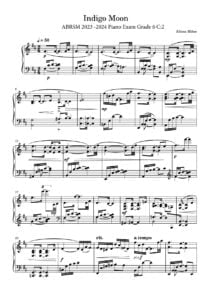 |
|
| ABRSM Piano Exam 2023-24 Jester’s Jig by Chee-Hwa Tan |
 |
|
| ABRSM Piano Exam 2023-24 Love Theme by Catherine Rollin |
 |
|
| ABRSM Piano Exam 2023-24 Minuet In G (Anonymous) |
 |
|
| ABRSM Piano Exam 2023-24 The Song Of Twilight by Yoshinao Nakada |
 |
|
| ABRSM Piano Exam Pieces Grade 1 2013 & 2014 syllabus |
 |
ABRSM Piano Exam Pieces Grade 1 2013 & 2014 syllabus |
| ABRSM Piano Exam Pieces Grade 1 2023 2024 |
 |
ABRSM Piano Exam Pieces Grade 1 2023 2024 |
| ABRSM Piano Exam Pieces Grade 1 2025 2026 |
 |
ABRSM Piano Exam Pieces Grade 1 2025 2026 |
| ABRSM Piano Exam Pieces Grade 2 2023 2024 |
 |
ABRSM Piano Exam Pieces Grade 2 2023 2024 |
| ABRSM Piano Exam Pieces Grade 3 2013 2014 |
 |
|
| ABRSM Piano Exam Pieces Grade 3 2023 2024 |
 |
ABRSM Piano Exam Pieces Grade 3 2023 2024 |
| ABRSM Piano Exam Pieces Grade 3 2025 2026 |
 |
ABRSM Piano Exam Pieces Grade 3 2025 2026 |
| ABRSM Piano Exam Pieces Grade 4 2021 2022 |
 |
ABRSM Piano Exam Pieces Grade 4 2021 2022 |
| ABRSM Piano Exam Pieces Grade 4 2023 2024 |
 |
|
| ABRSM Piano Exam Pieces Grade 5 2023 2024 |
 |
ABRSM Piano Exam Pieces Grade 5 2023 2024 |
| ABRSM Piano Exam Pieces Grade 6 2023 2024 |
 |
ABRSM Piano Exam Pieces Grade 6 2023 2024 |
| ABRSM Piano Exam Pieces Grade 7 2023 2024 |
 |
ABRSM Piano Exam Pieces Grade 7 2023 2024 |
| ABRSM Piano Exam Pieces Grade 8 2023 2024 |
 |
ABRSM Piano Exam Pieces Grade 8 2023 2024 |
| ABRSM Piano Exam Pieces Grade 8 2025 2026 |
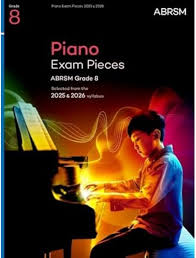 |
ABRSM Piano Exam Pieces Grade 8 2025 2026 |
| ABRSM Piano Mix 3 for Easy Piano Grades 3-4 |
 |
ABRSM Piano Mix 3 for Easy Piano Grades 3-4 |
| ABRSM Piano Prep Test |
 |
|
| ABRSM Piano Scales And Arpeggios from 2021 Guide For Practical Grades |
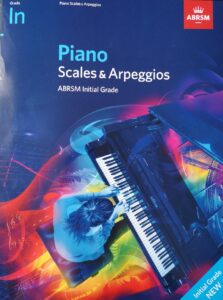 |
|
| ABRSM Selected Piano Exam 2011 2012 Grade 1 |
 |
|
| ABRSM Selected Piano Exam Grade 2 (2011 2012 ) |
 |
|
| ABRSM Specimen Aural Tests Grade 1 to 3 |
 |
|
| ABRSM Specimen Aural Tests Grade 4 & 5 |
 |
|
| ABRSM Teaching notes on piano exam pieces (2013 & 2014) |
 |
|
| ABRSM The Manual Of Scales Broken Chords And Arpeggios For Piano |
 |
|
| ABRSM Theory of Music Exams Grade 8 (The Associated Board of Royal Schools of Music) 2010 |
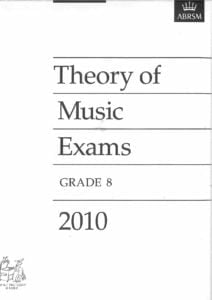 |
|
| AC/DC – Classic – Early Years – High Voltage And Let There Be Rock (Guitar Tab Songbook) |
 |
ACDC – Classic – Early Years – High Voltage And Let There Be Rock |
| AC/DC – Jam With AC/DC (PDF with MP3 audio tracks Guitar Tab Songbook) |
 |
Jam With ACDC |
| AC/DC Rock Score |
 |
|
| AC/DC, Best of (Guitar & Tablature) |
 |
Best Of ACDC (Guitar) |
| Ace Of Base – Beautiful Life | ||
| Ace Of Base – Dont Turn Around | ||
| Ace Of Base – Living In Danger | ||
| Acoustic 33 TOP Guitar Hits (Guitar Songbook) with Tablature – sheet music |
 |
Acoustic 33 TOP Guitar Hits (Guitar Songbook) – sheet music |
| Acoustic Blues Guitar By Kenny Sultan Guitar Tab |
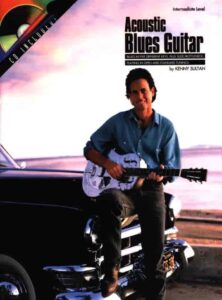 |
Acoustic Blues Guitar |
| Acoustic Blues Guitar Keith Wyatt with TABs |
 |
Acoustic Blues Guitar Keith Wyatt with TABs |
| Acoustic Blues Guitar Styles (Larry Sandberg) (with Tablature) |
 |
Acoustic Blues Guitar Styles (Larry Sandberg) |
| Acoustic Classics 42 songs Piano Vocal Guitar |
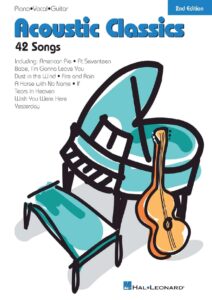 |
Acoustic Classics 42 songs Piano Vocal Guitar |
| Acoustic Guitar Bible (35 great songs) Guitar with TABs |
 |
Acoustic Guitar Bible (35 great songs) Guitar with TABs |
| Acoustic Rock (Guitar) Rolling Stones, Green Day, Pink Floyd, Bob Dylan (Songbook Guitar Tab) with Tablature |
 |
|
| Acoustic Rock 90’s, Best of – Guitar with Tablature |
 |
Acoustic Rock 90’s, Best of – Guitar |
| Acqua azzurra acqua chiara (Battisti) | ||
| Ad Te Levavi (Musescore File).mscz | ||
| Adagio (Lara Fabian) | ||
| Adagio MP3.zip | ||
| Adah’s Theme (La femme avec les yeux lumineux) Sex and the City |
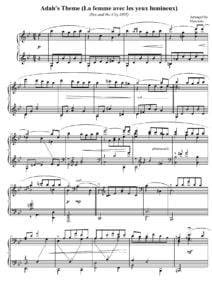 |
|
| Adah’s Theme (Le femme avec les yeux lumineux) Sex and the Cit | ||
| Adam – Adolphe Charles Holy Night Cantique-Nöel |
 |
|
| Adam – Cantique de Nöel Minuit Chretiens | Adam – Cantique de Noel Minuit Chretiens VS | |
| Adam – Derniers souvenirs d’un musicien |
 |
|
| Adam – O Holy Night | Adam – O Holy Night | |
| Adam – Souvenirs d’un musicien |
 |
|
| Adam (Cappeau) – Cantique de Noël. Easy Piano with voice or instrument (Paroles and lyrics) |
 |
Adam-Cappeau-Cantique-de-Noel- |
| Adam (Cappeau) – Cantique de Noel. Easy Piano with voice or instrument.mscz | ||
| Adam Cantique de Nöel Christmas song | Adam Cantique de noel | |
| Adam Carse – The History Of Orchestration Adam Carse |
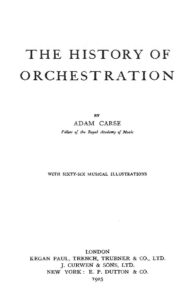 |
|
| Addams Family Theme (Musescore File).mscz | ||
| Addams Family Theme (Easy Piano) |
 |
|
| Addio Colonnello (Ennio Morricone) | ||
| Adele Songs from the Album 21 For SATB, SSA and Piano |
 |
Adele Songs from the Album 21 |
| Adele – 21 |
 |
ADELE 21 SONGBOOK |
| Adele – Chasing Pavements Piano Vocal guitar chords |
 |
|
| Adele – Easy on me (Piano solo with lyrics) |
 |
|
| Adele – Rolling in the Deep |
 |
|
| Adele – Rumor Has It |
 |
|
| Adele – Set Fire to the Rain |
 |
|
| Adele – Set Fire To The Rain (2) (Musescore File).mscz | ||
| Adele – Someone Like You | Adele – Someone Like You | |
| Adele – Someone Like You easy piano |
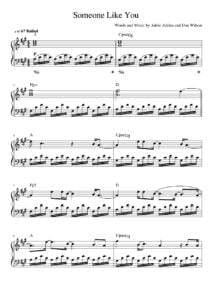 |
|
| Adele – The Best Of SongBook (12 songs arranged for easy piano) |
 |
Adele – The Best Of SongBook (12 songs arranged for easy piano) |
| Adele 19 [Piano, Guitar, Vocals] |
 |
Adele 19 [Piano, Guitar, Vocals] |
| Adele 25 Songbook |
 |
Adele 25 Songbook Contents —  |
| Adele Best Of Adele Big Note Piano (Adele Adkins) |
 |
Adele Best Of Adele Big Note Piano (Adele Adkins) |
| Adele Easy On Me Sheet Music |
 |
|
| Adele Original Keys For Singers (Adele) |
 |
Adele Original Keys For Singers (Adele) |
| Adele Skyfall (Piano Vocal Guitar Chords) | Adele Skyfall (Piano Vocal Guitar Chords) | |
| Adios Amor – Goodbye My Love as recorded by José Feliciano |
 |
|
| Adult All In One Course Level 1 With Audio Mp3 (Willard Palmer) |
 |
Lessons Alfred’s Basic Adult Piano Course Level 1 |
| Adult All In One Course Level 2 With Audio Mp3 (Willard Palmer) |
 |
Willard Palmer – Adult All-In-One Course Level 2 |
| Adult Greatest Movie Hits Piano Level 1 |
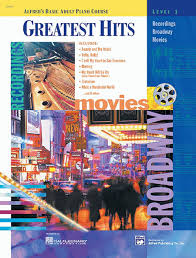 |
Adult Greatest Movie Hits Piano Level 1 |
| Adult Piano Adventures ALL-IN-ONE PIANO COURSE 1 |
 |
|
| Adult Piano Adventures All-In-One Piano Course Book 2 Book With Media Online (Nancy Faber, Randall Faber) Sheet Music |
 |
|
| Adult Piano Adventures Christmas – Book 1 (Nancy Faber Randall Faber) |
 |
|
| Adult Piano Adventures Christmas – Book 2 |
 |
Adult Piano Adventures Christmas – Book 2 |
| Adult Piano Adventures Popular Book 1 – Timeless Hits and Popular Favorites (Adult Piano Adventures Popular) |
 |
Adult Piano Adventures Popular Book 1 – Timeless Hits and Popular Favorites (Adult Piano Adventures Popular) |
| Adult Piano Course Greatest Movie Hits Piano Level 1 Recordings Broadway Movies |
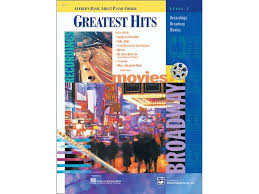 |
Adult Piano Course Greatest Movie Hits Piano Level 1 Recordings Broadway Movies |
| Advanced Harmonic Concepts by Wayne Naus (with audio MP3) |
 |
Advanced Harmonic Concepts by Wayne Naus |
| Advanced Harmonic Exercises For Jazz Piano |
 |
advanced harmonic exercises |
| Advanced Piano Solos 1 Encyclopedia by Tom Roed |
 |
Advanced Piano Solos 1 Encyclopedia by Tom Roed |
| Advanced Piano Solos 2 Complete by Tom Roed |
 |
Advanced Piano Solos 2 Complete by Tom Roed |
| Advanced Sacred Music Piano Solos by John Kraus |
 |
|
| Advanced Scale Concepts and Licks for Guitar (PDF + MP3 audio tracks Play Along) with Tablature |
 |
 |
| Aebersold – 110 – When I fall In Love – Romantic Ballads pdf with embedded audio MP3 Tracks |
 |
Jazz Play Along Vol 110 [When i Fall in Love] |
| Aebersold – 113 Embraceable You – Vocal Standards with audio MP3 Tracks |
 |
Jamey Aebersold – Vol 113 |
| Aebersold – 30 blues scale By Jamey Aebersold | Aebersold – 30 blues scale By Jamey Aebersold | |
| Aebersold – A New Approach To Jazz Improvisation Gettin’it together vol. 21 |
 |
aebersold gettin all together vol 21 |
| Aebersold – Practice Procedures For Memorizing Scales And Chords | Aebersold – Practice Procedures For Memorizing Scales And Chords | |
| Aebersold – Rapid Reference Vol 1-114 | Aebersold – Rapid Reference Vol 1-114 | |
| Aebersold – Vol 01 – How to Play and Improvise Jazz (with audio MP3) |
 |
Aebersold – Vol 01 – How to Play and Improvise Jazz |
| Aebersold – Vol 03 – The II-V7-I Progression Jazz Play Along Book + Audio Mp3 |
 |
|
| Aebersold – Vol 105 – Dave Brubeck Jazz Play Along Book + Audio Mp3 |
 |
|
| Aebersold – Vol 118 – [Groovin Jazz] (with audio MP3) |
 |
|
| Aebersold – Vol 32 – Ballads Jazz Play Along Book + Audio Mp3 |
 |
|
| Aebersold – Vol 34 – Jam Session Jazz Play Along Book + Audio Mp3 |
 |
Includes MP3 Play along themes as Blue moon, The shadow of your smile, Over the rainbow, etc. |
| Aebersold – Vol 45 – [Bill Evans] Jazz Play Along Book + Audio Mp3 |
 |
Aebersold – Vol 45 – [Bill Evans] |
| Aebersold – Vol 58 – Unforgettable Standards Jazz Play Along Book + Audio Mp3 |
 |
aebersold unforgettable standards sheet music |
| Aebersold – Vol 76 – David Baker – How To Learn Tunes (A Jazz Musician’s Survival Guide) |
 |
how to learn tunes |
| Aebersold 25 How To Practice By Jamey Aebersold | Aebersold 25 | |
| Aebersold Antonio Carlos Jobim Vol 98 – Bossa Nova Songbook Jazz Play Along Book + Audio Mp3 |
 |
Aebersold Antonio Carlos Jobim Vol 98 – Bossa Nova Songbook |
| Aebersold Anyone Can Improvise – 52 Points To Remember | Aebersold Anyone Can Improvise – 52 Points To Remember | |
| Aebersold Jazz EAR training (with audio MP3) |
 |
Aebersold Jazz EAR train |
| Aebersold Jazz Handbook 09 Tips For Learning A New Tune & Practice Procedures For Memorizing |
 |
Aebersold Jazz HANDBOOK |
| Aebersold Jazz Play-Along Books & audio MP3 1st Part Full Collection – Vol 1- 40 (with MP3) for all instruments |
Compressed file  Aebersold Full Collection Part 1 – Vol 1- 40 Aebersold Full Collection Part 1 – Vol 1- 40 |
40 volumes with MP3 Aebersold Book Index Vol.001-106 |
| Aebersold Jazz Play-Along Books & audio MP3 2nd Part Full collection Vol 41- 75 for all instruments | Compressed fileAebersold Full Collection Part 2 – Vol 41- 75.. | 35 volumes with MP3 Aebersold Book Index Vol.001-106 |
| Aebersold Jazz Play-Along Books & audio MP3 3rd Part Full Collection – Vol 76- 112 (with MP3) | Compressed fileAebersold Full Collection Part 3 – Vol 76- 112 | 37 volumes with MP3 Aebersold Book Index Vol.001-106 |
Best Sheet Music download from our Library.
Please, subscribe to our Library.
If you are already a subscriber, please, check our NEW SCORES’ page every month for new sheet music. THANK YOU!
